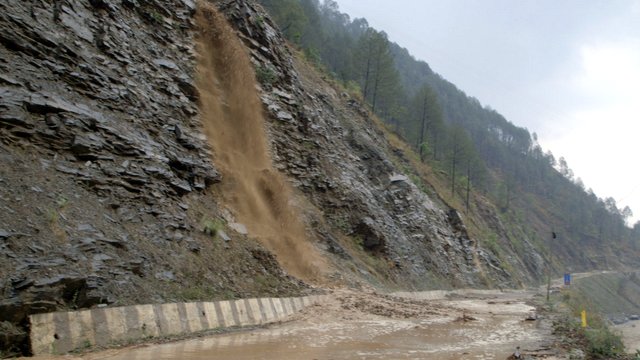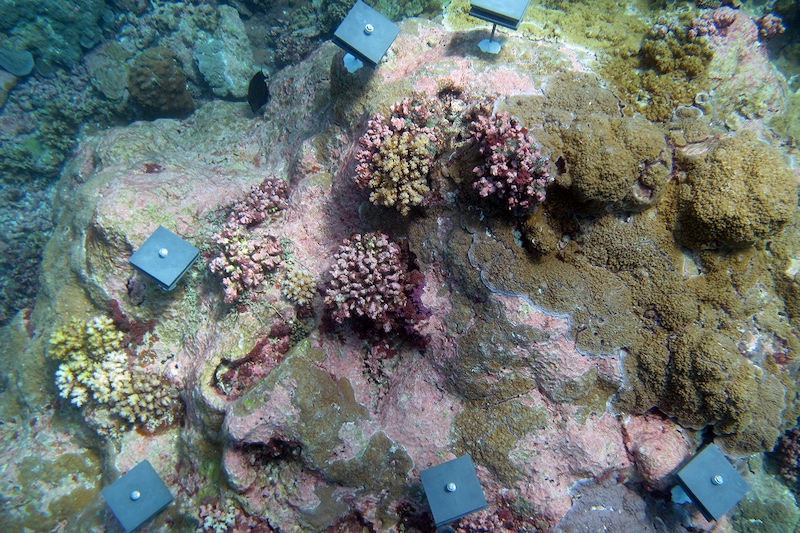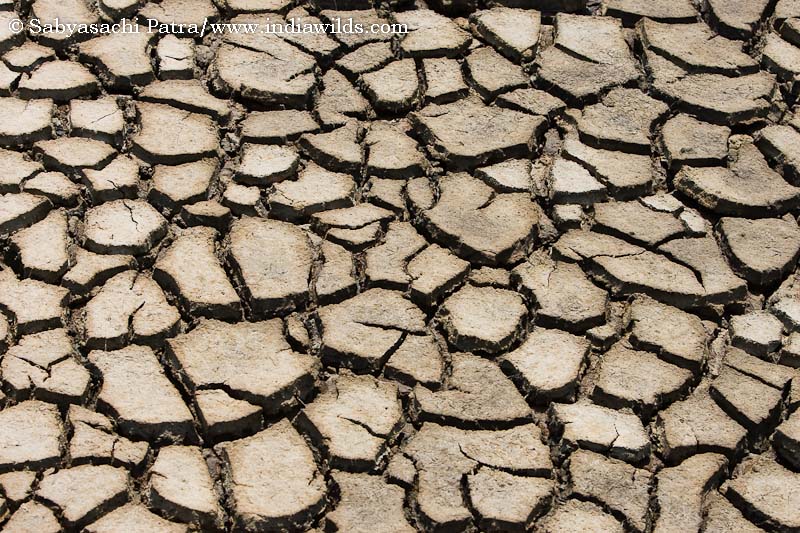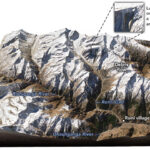IndiaWilds Newsletter Vol. 13 Issue VI
ISSN 2394 – 6946
Climate Change: Vice like grip on daily lives
It is now common knowledge that Climate Change is causing extreme weather events at a much more rapid frequency as well as increasing the intensity of those events. Since preindustrial era the temperature of Earth has increased by 1.1 °C. Unseasonal cyclones, floods, storm surge, rains, landslides are becoming common. India faced two back-to-back cyclones in May 2021 with Cyclone Tauktae hitting the Gujarat in the western coast and Cyclone Yaas hitting West Bengal and Odisha a few days later in the eastern coast. People are slowly realizing that these extreme weather evens are the due to the impact of climate change. However, people don’t realise that there are also many common day to day events in our lives that are also impacted by Climate Change.
Japan: Tokyo Olympic Games
In Tokyo, Olympic games are to be held in July and August 2021. The Olympic Games organisers are shifting athletics events away from Tokyo city as the temperature along with high humidity there is not suitable for athletes. A report (Rings of Fire, How Heat could Impact 2021 Tokyo Olympics; British Association for Sustainable Sport https://basis.org.uk/rings-of-fire ) says “The mean annual temperature in Tokyo, the capital city and host of the 2021 Olympics, has increased by 2.86°C since 1900, more than three times as fast as the world’s average. Since the 1990s Tokyo residents have frequently experienced more days when the maximum daily temperature exceeds 35°C.”
It is a fact that increase in temperature by even one tenth of a degree centigrade can make some areas on earth uninhabitable. Different areas on earth are impacted in a dissimilar manner, some bearing the brunt of climate change more. The report says “Japan and more specifically Tokyo, is warming much faster than the rest of the planet. The mean and maximum daily temperature over Japan have increased, but the largest temperature rise is in the minimum temperature values, especially during the winter months. This translates in less snow depth every winter, especially over Western Japan where the snow layer is 12.3% thinner each decade.”
The Olympics is the epitome of sporting prowess and a medal there is considered as the ultimate success of a human in pushing boundaries of pain, endurance, willpower to triumph over other atheletes. Unfortunately, the common men and women don’t realise that while athletes can train to outcompete with each other, they cannot beat the effects of Climate Change. Even though the impact on the health of athletes can even at times be fatal, common people ignorant of climate change will feel that athletes should have trained better. Hence, it is important that the Tokyo Olympics, which would be seen by millions of people, be used as an anchor to disseminate the information regarding impact of Climate Change on our lives.
Tokyo had hosted the Olympics in 1964. At that time the mean temperature (DBT or dry bulb temperature) was 11.1°C. In July 2021 during the Olympics the temperature in Tokyo is expected to be 25 °C. It would be even more than a degree higher in August at 26.4 °C. However, it may be noted that the 1964 Olympics in Tokyo was held in October. These days they don’t want to hold the Olympics in October or later in the year as TV Networks feel it would clash with other programming. And that sums up human attitude towards Climate Change.
It is our greed which is pushing the Earth towards Climate Change. A lot of our actions are driven by greed rather than by need. Too often we think of scale, to make things bigger. We forget that beyond a point things become unsustainable.
Australia: Great Barrier Reef
While the athletes in Tokyo Olympic games are facing dangerous heat conditions due to climate change, an iconic natural heritage in nearby Australia – the Great Barrier Reef – is also in danger. The Great Barrier Reef spans over 345,000 square kilometers, and has rich biodiversity with 411 species of corals and 1500 species of fish. UNESCO has recently proposed that the Great Barrier Reef be included in the list of List of World Heritage in Danger.
The Great Barrier Reef is a marine ecosystem which is vital to the Planet Earth’s survival. The revenue from the tourism as well as income from fishing though huge is incidental. The main impact is in controlling the Earth’s climate. The algae which live inside the corals play a huge role in this. Phytoplanktons, sea-weed and Zooxanthellae produce a gas called DMS (Dimethylsulfide). This DMS gas escapes from the ocean and moves into our atmosphere and helps in cloudseeding. Hence, solar radiation is blocked from reaching the earth and is reflected back.
This amazing help in fighting climate change is not going to last long as the corals of Great Barrier Reef (GBR) have thrice suffered mass bleaching since 2015. It has lost half of its coral population in the last three decades. If this continues, the reef will die.
There are many factors that impact the health of the Great Barrier Reef like changes to oceanic waters, ground water pollution, impact of marine transport infrastructure like ports, shipping lane impacts, grounding of ships; presence of liquefied natural gas facilities, surface water pollution, temperature change etc.
The 2019 GBR Outlook Report had concluded that the long-term outlook for the ecosystem of the reef has gone down from poor to very poor and that climate change remains the most serious threat. Other key threats are land-based run-off, coastal development and some direct human uses. The UNESCO report had also concluded that accelerated action to mitigate climate change and improving water quality was essential to turn around the condition of the Great Barrier Reef. So recently Unesco has urged the Australian Govt. to do more to fight climate change so that the Great Barrier Reef can be saved.
The report had noted a 30% loss of shallow-water coral cover following the 2016 bleaching event and the combined footprint of the 2016 and 2017 bleaching event extending over two thirds of the reef. So UNESCO has recently raised its concerns regarding this iconic heritage site and wants to include it in the list of World Heritage in Danger.
Unfortunately, Australia is now heavily focused on short term economic development through mining of coal and despite protestations by its own people, it is going ahead with a heavy fossil fuel strategy. Australia is also a country which has not agreed to be net zero carbon emitter by 2050. We humans in every country appear to prioritise our short-term interests and ready to ignore climate change. Unfortunately, climate change processes are oblivious to our politics. With increasing climate change, the ocean waters will further warm up and the corals will bleach more and more. This would make it very difficult to save the Great Barrier Reef (GBR).
Brazil: Amazon
Amazon rainforests are spread over 8 countries in South America covering more than 40 percent of it. It the world’s largest rainforest and is a treasure trove of biodiversity. There are some estimated 16000 tree species in Amazon. (Ter Steege et al.; Science 342, 1243092 (2013).
DOI: 10.1126/science.1243092)
Unfortunately, Climate Change is singeing the rainforests of Amazon as deforestation continues at an accelerated pace, to open areas for agriculture, posing high risks of irreversible changes to biodiversity and ecosystems.
When you cut down the rainforests, the moisture released into the atmosphere by the trees through evapotranspiration is now lost. With less of moisture, the area warms fast. The region has warmed about 1 °C over the last 60 y, and total deforestation is reaching 20% of the forested area. (Land-use and climate change risks in the Amazon and the need of a novel sustainable development paradigm; Carlos A. Nobre et al., PNAS Sep. 27, 2016).
Reflecting a change in temperatures resulting in more dry seasons, the composition of tree species is also bound to change. Researchers based on 30 years observational records conclude that there is a shift to large saturated trees. “Among newly recruited trees, dry-affiliated genera have become more abundant, while the mortality of wet-affiliated genera has increased in those plots where the dry season has intensified most. Thus, a slow shift to a more dry-affiliated Amazonia is underway, with changes in compositional dynamics (recruits and mortality) consistent with climate-change drivers, but yet to significantly impact whole-community composition. The Amazon observational record suggests that the increase in atmospheric CO2 is driving a shift within tree communities to large-statured species and that climate changes to date will impact forest composition, but long generation times of tropical trees mean that biodiversity change is lagging behind climate change.” (Compositional response of Amazon forests to climate change, Adriane Esquivel-Muelbert et al.; Global Change Biology, Nov 2018)
There has been 80 percent reduction of Amazon forests in Brazil in the last decade. In 2019, Amazon in Brazil suffered its worst due to massive fires. Around 2.24 million acres of rainforest was destroyed in 2019. The fires were setup to turn the forests into ashes so that the areas can be cleared of the native tribes and the lands can be grabbed by the real estate lobby. Brazil’s President Jair Bolsonaro did nothing to stop the fire. Recently he even asked US to compensate Brazil in lieu of saving the rainforests.
Recently in the month of May 2021, deforestation has increased by 67% year-on-year ( http://terrabrasilis.dpi.inpe.br/app/dashboard/deforestation/biomes/legal_amazon/rates ) With such massive deforestation, the amount of carbon sequestration capacity lost is massive. The impact of increase in greenhouse gases on earth is going to be substantial. Climate Change knows no boundaries. The actions anywhere on earth is going to impact all of us. The single-handed action of burning the amazon rainforests is nothing but an ecological crime against planet earth and humanity. Unfortunately, the world understands genocide but doesn’t recognize crime against ecology.
USA: Drought
Several states of USA are facing severed drought. California Governor has declared a statewide heat emergency. (https://www.gov.ca.gov/wp-content/uploads/2021/06/6.17.21-Extreme-Heat-proclamation.pdf). Lake Oroville, which is the second largest reservoir in California, is expected to see its waterlevel deplete from the current 700 feet level to 640 feet. This will result in the Edward Hyatt Power Plant to shut down operators. Several other power plants are also expected to operate at a much lower capacity due to water shortage. Hence, people will face electricity shortage.
The USA was the champion of a lifestyle which relied on excessive consumption and consumerism. Suddenly due to climate change, major parts of America is now facing a grim power situation like low income countries. We have been aping the model of west and have been adopting a high carbon lifestyle like the western countries. Leaders of various countries are loathe to cutdown on the high carbon lifestyles and demand that they too have a moral right to follow a profligate lifestyle even though that fuels climate change. The fact that parts of America is going to go dark, a situation currently experienced by many parts of Bihar and other backward states of India, should make us reevaluate our priorities. This should be a wakeup call for all countries which used to see America’s high carbon lifestyle as a success story. Climate Change will spare none.
It is time we raise awareness about climate change among the common masses and convince our leaders to take steps to mitigate climate change. Else, we will soon reach a tipping point and there will be no tomorrow for us, the human species.
Nalsarovar: Losing its Glory
By Mrs.Sakti Bishnoi and Mr.A S Bishnoi
Conservation News:
Desertification and Land Degradation Atlas of India released
On 17th June, The Desertification and Drought day was commemorated by the Ministry, with an aim to generate large scale awareness towards understanding the key role of land in all environmental and economic concerns, that world, as well as India is facing now-a days.
Minister of State for Environment, Forest and Climate Change, Shri Babul Supriyo today called for generating awareness towards preventing and restoring land degradation for healthier and sustainable ecosystems. Speaking at a virtual event celebration of the Desertification and Drought Day, Shri Supriyo said, this will help better economy and overall human wellbeing.
On the occasion, the Minister of State released the latest version of “Desertification and Land Degradation Atlas of India. It has been published by Space Application Centre, ISRO, Ahmedabad. The Atlas provides state wise area of degraded lands for the time frame 2018-19. It also provides the change analysis for the duration of 15 years, from 2003-05 to 2018-19.
Secretary in the Ministry Shri RP Gupta said, the salient findings of this Atlas are not only useful as a ready reference, but, will also be helpful in strengthening the envisaged National Action Plan for achieving land restoration targets by providing important baseline and temporal data and technical inputs.
The event also observed release of Coffee Table Book “India Hosting UNCCD-COP 14” and a short film on UNCCD-COP 14. The commemoration of this event encourages individuals and groups to take initiatives that can keep the land healthy and productive.
India had hosted the 14th session of Conference of Parties (COP 14) of United Nations Convention to Combat Desertification (UNCCD) in September 2019. India has announced that it will strive towards achieving the national commitments of Land Degradation Neutrality (LDN) and restoration of 26 Million ha of degraded land by 2030 which focus on sustainable and optimum utilisation of land resources.
India and Bhutan sign MoU for Environment Cooperation
India and Bhutan inked an MoU for developing cooperation between two countries in the area of environment on 18thJune, 2021. The MoU was signed virtually by Minister of Environment, Forest and Climate Change Prakash Javadekar from the Indian side and Minister of Foreign Affairs and Chairperson of the National Environment Commission Lyonpo Dr. Tandi Dorji from the Bhutanese side.
The MoU is a platform to further enhance Indian and Bhutanese partnership and support, exchange best practices in areas like prevention of Air Pollution, Waste Management, Chemical Management, Climate Change, etc. It also provides the possibility to have joint projects in areas of mutual interest. The MoU will also strengthen technological, scientific and management capabilities and expand the areas of cooperation in the field of environment to promote a mutually beneficial partnership between the two countries.
Speaking on the occasion, Shri Javadekar said, the MoU will open new vistas of bilateral co-operation in the area of climate change, waste management etc. Describing the relationship between the two countries as symbolic, he said, India wants to engage with Bhutan on environmental related issues including climate change.
LiDAR survey report for forest areas of 10 states released
LiDAR based surveys of forest areas have been carried out in ten states namely Assam, Bihar, Chhatisgarh, Goa, Jharkhand, Madhya Pradesh, Maharashtra, Manipur, Nagaland, and Tripura. Detailed project reports of these LiDAR surveys of forest areas were released On 25 June in a virtual event by the Minister for Environment, Forest and Climate Change, Shri Prakash Javadekar.
The Minister informed that the project which was awarded to WAPCOS, a PSU under the aegis of Ministry of Jal Shakti, Government of India. It is a first of its kind and a unique experiment using LiDAR technology which will help augment water and fodder in jungles areas thereby reducing human-animal conflict, help in groundwater recharge, help local communities and also asked state forest departments to use CAMPA funds towards implementation of these projects in right earnest and in accordance with the ‘Ridge to Valley’ approach of watershed management.
WAPCOS has prepared these DPR’s using LiDAR technology in which the 3-D(three dimensional) DEM (Digital Elevation Model), imagery and layers of the project areas are used for recommending different types of Soil & Water conservation structures such as Anicut, Gabion, Gully Plug, Mini percolation tank, Percolation Tank, Field bund, Sunken pond, Farm pond etc. These structures will help in catching the rain water and prevent stream run off, which will help in recharging of Ground water.
WAPCOS with the participation of State Forest Departments identified one major ridge inside a forest block in these states with average area of 10,000 ha selected in each State for preparation of Detailed Project Reports for planning and identifying locations and structures for construction of appropriate and feasible micro soil and water conservation structures consistent with site specific geography, topography and soil characteristics.
States/UTs identified one major ridge inside a forest block with the criteria that area selected should have average rainfall of the state, and the area requires assisted natural generation which means the density of forests should be less than 0.4 or below, but should have reasonable potential to regenerate with the ANR interventions.
The project was awarded to WAPCOS in July 2020 at a cost of Rs.18.38 Crore/- for implementation in 26 states over 261897 hectare. The DPR’s for the remaining 16 states will also be released shortly.
Creating Seagrass meadows to Fight Climate Change
Researchers are throwing sand bags into the Ocean near Australia’s coast. The researchers hope that seedlings of seagrass while floating through the ocean will latch on to these sandbags. When the seedlings find an anchor like the sandbag, they will stay put and create a seagrass bed. Scientists are planning to drop 50,000 sandbags which will ensure that there is a large enough seagrass bed created in dozens of acres of seafloor.
Seagrass trap carbon and help contain climate change. Scientists believe Seagrass has more potential than terrestrial forests in mitigating the effects of climate change. Hence this effort to develop seagrass meadows in the forest. This is also termed as Blue Carbon and more research effort is being directed towards the marine ecosystems.
Ensuring that our coastal habitats are pristine will help a lot in fighting climate change. There was a time when mangroves were abundant along the coastlines throughout the world. The mangroves are known to have roughly 3-5 times more carbon sequestration potential than normal trees. Along with their impact on stopping coastal erosion and stopping storm surge, mangroves play a vital role to save us.
Unlike planting mangroves, creating seagrass meadows is a slow process. Planting seagrass in the seabed through divers is also a difficult and slow process. Given the massive changes that we humans are doing to this planet, these efforts can be termed as very small. Nevertheless, we should explore and try our best to understand the complex way natural processes work. When we understand we start developing respect for various species and that often leads to effort to save the species.
Equipment Discussions:
Sony launches Airpeak S1 drone for Professional Use
Sony has announced that it is has launched Airpeak S1 drone
Godox announces SL100D video light with high output
US Government lifts restrictions on Chinese made DJI drones
The USA Government has lifted the restrictions on DJI drones after security review from Pentagon. In 2019, the US Government had placed restrictions believing the vulnerability of data being transmitted to china through the drone software. Recently a thorough security review has allayed those concerns.
For more details click below link –
Natural History
COUNTRY NOTEBOOK: M. Krishnan: ‘The Sea-king’s Eyrie‘ shared By Saktipada Panigrahi
https://www.indiawilds.com/forums/showthread.php?8852-Country-notebook-m-krishnan&p=53359#post53359
TEDx Talk: Learning from India’s Wilds
A recent TEDx talk by Sabyasachi Patra explores the strategies wildlife use in their life and death battles. These learnings can help we humans in improving our lives.
Photography Tips – Learning Exposure
To make photography learning easier, we are creating a photography tutorial video series. The first part of photography tips is on learning exposure. Check it out in this link: https://youtu.be/PT3vvNIJx1g
Wildlife Photography
Tiger by Shyamala Kumar
https://www.indiawilds.com/forums/showthread.php?19933-The-Magnificent-Rayakhasa
Sambar Deer by V S Sankar
https://www.indiawilds.com/forums/showthread.php?19935-Sambar-Deer-Sariska!
Spoonbill by Sabyasachi Patra
https://www.indiawilds.com/forums/showthread.php?19941-Spoonbill
Brown-winged Kingfisher by Mrudul Godbole
https://www.indiawilds.com/forums/showthread.php?19918-Brown-winged-Kingfisher
Peacock by Jerin Dinesh
https://www.indiawilds.com/forums/showthread.php?19911-The-dance-in-nature
Pond Heron by Samrat Sarkar
https://www.indiawilds.com/forums/showthread.php?19942-Death-trap
Misty Hills by Sabyasachi Patra
https://www.indiawilds.com/forums/showthread.php?19940-Misty-Hills
Nomad bees by Prajwal Ullal
https://www.indiawilds.com/forums/showthread.php?19914-The-sleeper-bee
This is the 150th issue of IndiaWilds. An image of a tiger cub adorns the coverpage of this issue. The young tiger cub was waiting throughout the day while the tigress had gone out to hunt prey. This curious tiger cub had come close to inspect the humans on the vehicle, wondering what they are upto. The tiger cub is oblivious to the fact that while it is growing up under the protection of its mother, the outside world is changing. Thousands of square kilometers of forests are being sacrificed for industries, roads, dams and other projects. As a result protected areas like this are less and more tigers are being hemmed in a small area. The result is disastrous for tigers. The existing prey base and the small size of the area doesn’t allow all the tigers to live harmoniously. There is conflict. Young tigers such as this, after branching out from the tigress has to look for a territory to establish. At the periphery, there are easy cattle prey and with that comes poisoning, capture and a life behind bars. Some tigers get runover by speeding vehicles in the highway.
Tigers can’t tolerate heat and need to find waterholes to cool themselves. Unfortunately, Climate Change is raising the global ambient temperatures and water is becoming scarce in the waterholes. The amount of energy they expend while trying to hunt becomes higher and it becomes difficult for tigers. The word tiger evokes much awe. However, these days the life of a tiger is far from awesome. If we want our apex predator to thrive, then we have to preserve our wilderness areas and ensure that wildlife corridors between various forests are recreated so that tigers and other wild species can move between them and repopulate different forests and revitalise the genetic pool.
http://www.indi
To post in the IndiaWilds forums, you can register free of cost using your Full Name as user id at:
http://www.indiawilds.com/forums/register.php
If you are already a member of IndiaWilds and have forgotten your user id and/or password you can mail to:
administrator@indiawilds.com
Regards,
Sabyasachi Patra
Profile | Contact Us | Facebook | Diary | Equipment reviews | Forums | IndiaWilds You Tube Channel
Please post your views and feedback in the comments below.
- Endangered Wild Buffalo of Kaziranga - 4 July,2024
- Leopards: The Last Stand Trailer 2 - 1 July,2024
- GoPro Hero 12 Black - 6 September,2023















Leave a Reply